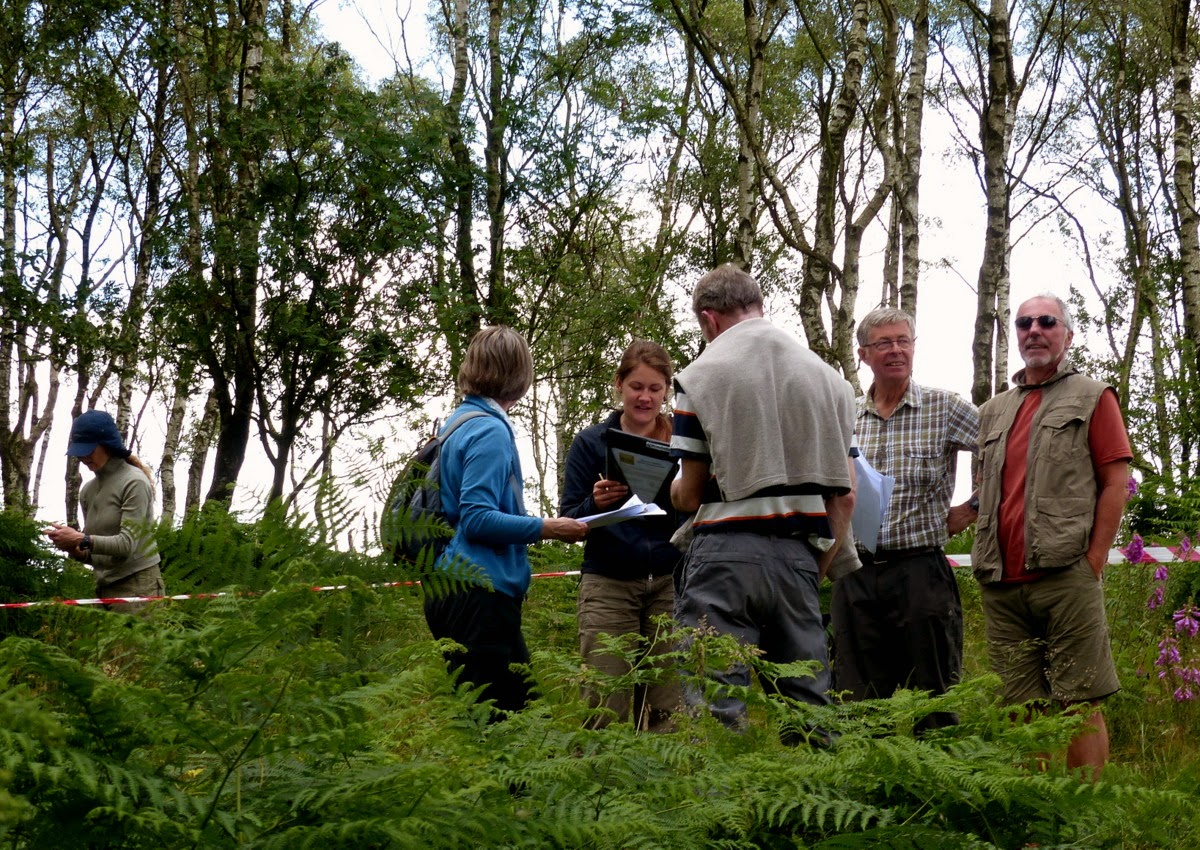With the onset of summer (a real summer no
less, with actual sunshine!) many birds are on the move already, and wader
migration peaks earlier than most. Curlew are no exception, and it’s been a
good week or two since I’ve heard one over the moors – the majority of birds
have finished breeding and are moving to lowland and coastal feeding grounds.
 |
| Big Moor looking green, and light on curlew, late in the season. |
Our nest and productivity monitoring has
therefore come to an end and I’ve swapped fieldwork for data analysis – what
have we learnt?
The curlew population on the Eastern Moors
appears to be stable – both this year’s standardised and more intensive survey
efforts indicate around 20 breeding pairs, similar to previous surveys dating
back 10 years. The productivity analysis supports this view, with curlew producing
just above the number of young which is needed to maintain a stable population.
This is good news at a time when the national (and international) picture is
one of decline.
 |
| A chick trying (and failing!) to flatten itself to the ground during a productivity survey. |
However, this comes from a sample of a
small population – we found nests for six pairs of birds, plus an additional
three pairs where the young were located but not the nest. We therefore know
the nesting outcomes for around half of the Eastern Moors population – but a
small number in absolute terms.
Of the six pairs whose nests were located,
two pairs failed to hatch chicks (due to egg predation) and one pair the chicks
were predated shortly after hatching. In a fourth pair the eggs were predated,
but they successfully hatched three chicks in a second clutch.
Foxes predated two clutches of eggs and the
chicks shortly after hatching, with a badger taking the third clutch of eggs. I
previously blogged about a possible crow-predated nest, however after looking
at both predated and recently-hatched egg remains this is much more consistent
with the latter.
 |
| Recently hatched eggshell remains. |
We found curlew across a range of habitat
types across the Eastern Moors, with a wet grass/rush dominated area generally
being preferred as a nest location and fewer birds in heather dominated areas.
Surprisingly birds often nested (successfully) in areas close to roads and
footpaths, areas which may be considered relatively disturbed, even with much less-disturbed
habitat available - there seems plenty of scope for the area to support a
larger population.
 |
| Undisturbed habitat among the cotton grass in the middle of Big Moor. |
It’s difficult to draw any wider conclusions
based on one year’s intensive survey effort of a small population, and with a
2-3 year time lag before birds return to breed (assuming fledglings return)
data needs to be collected over a number of years to see the impacts of
year-to-year variations in productivity – which may not necessarily be
reflected in breeding population size.
The wider South Pennines is one of the few
areas in the UK where curlew numbers are not declining, and the Eastern Moors
appears to be following that pattern. It’s important we keep monitoring and
looking at ways in which we can maintain, and hopefully increase, curlew
numbers – a little help to buck the wider downward trend.
Kim L.
Kim L.







